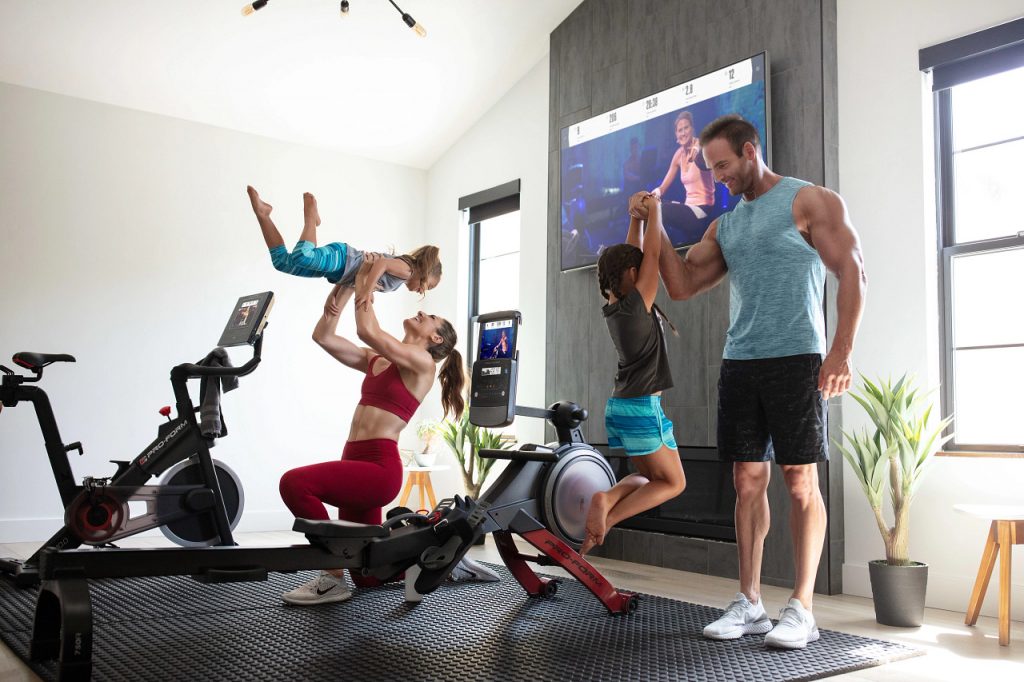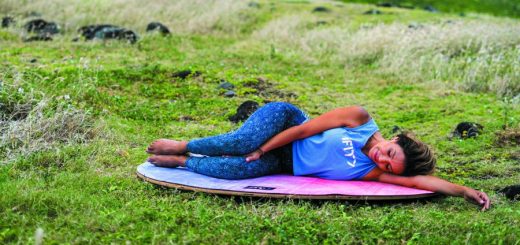Family Sport: My 3 Parent-Child Circuits
Doing exercise with the family: what’s my solution for balancing physical activity within a tight schedule? I take care of myself and my family at the same time, and everyone benefits. All you have to do is learn a few parent-child exercises to create family-friendly cross-training circuits!
The pleasure of doing sport as a family

Between my professional obligations and my family life, I sometimes find it challenging to fit my exercise sessions into my week. So what if one of them was with the family? After all, my children also need to exercise and spend quality time together to strengthen our bond.
Doing exercises with my children means:
- Taking advantage of their enthusiasm to motivate each other.
- Establishing a healthy family routine based on exercise, nutrition and sleep.
- Increasing the number of shared time with my partner and my children around a new joint activity, taking pleasure in doing something together outside the context of school or domestic tasks.
My Parent-Child Exercise Kit

To start parent-child exercises, all you need to do is learn a few fitness moves that are easy to do anywhere and at any age and develop some good habits.
5 Exercises to Create My First Circuits with Children
Some fitness exercises are particularly appealing to children. Here are 5 of them to appeal to your little ones and create your first family workouts:
- The crab walk to build up the shoulders, back and buttocks: this inverted crawl is bound to cause giggles. Sitting with your feet flat, put your hands behind you and then stand up: you’re ready to walk like a crab. Decide on a distance to cover in advance (start with a few metres).
- Star jumps with 180° rotation: this cardio exercise can be done several times to loosen up with your family or as a transition between two sets. You can also do quarter turns or full turns.
- Slam Ball: Everyone lifts a ball, which is not too heavy (adapted to the size of the children’s hands) above their head and then throws it hard onto the floor. This powerful exercise also helps to build up the abdominal muscles.
- Star jumps: This classic cardio exercise is suitable for all ages. Jump with your feet apart and clap your hands over your head. Do a second jump as you return to the starting position. Easy, right?
- The chair: Sitting on an imaginary chair with your back to the wall for as long as possible develops strength, stamina and adds an element of challenge. Each person holds on for as long as possible and tries to improve their score by one second each day.
The Right Habits for Successful Sessions
Here’s how to make your parent-child cross-training sessions a success:
- Prepare the space: in the garden or living room. Make sure you can all move and exercise safely.
- Start each session with a 5 to 10-minute warm-up: get the main joints moving and do a few strides on the spot.
- Start with short sessions, adapted to each child. There’s nothing to stop you from doing a yoga and stretching session with the little one on Monday and dynamic cross-training with the older one on Wednesday. The important thing is that everyone has their own special family time!
- Hydration at all times! Make sure that everyone has a drink available and initiate little hydration breaks.
- Accompany each child when they discover a new movement (ideally, one new movement per session maximum). Give each other advice in a kind and friendly way. Take turns to give each other advice or choose exercises that can help everyone feel heard. My tip? Our winning team has a mascot (a small object or toy that can be held). Whoever holds it has the floor (it can also be used to referee or time a course).
3 Ideas for Your First Cross-Training Circuits with Your Family

The cross-training circuit is perfect for doing exercise with children. Combine exercises by establishing a set of rules at the start: the number of repetitions in the circuit, length of sets, break times, etc. Here are 3 ideas for organising your first cross-training circuits with your family:
- Soundtrack your circuit with a playlist, which will set the pace for everyone.
- To avoid stepping on each other’s toes, plan a course, for example, in the garden, with fun ways of moving (hopping, running, chasing) to get to the different stations, like a military course, but much more fun!
- Make up a story to help the little ones get into the game: by associating each movement with an image (the crab walk and other postures with animal names are particularly suitable), they are sure to want to go back to save their blanket while moving through the jungle, or to cross the lava river without getting hurt!
Check out our Family & Kids Workout page for more advice.







